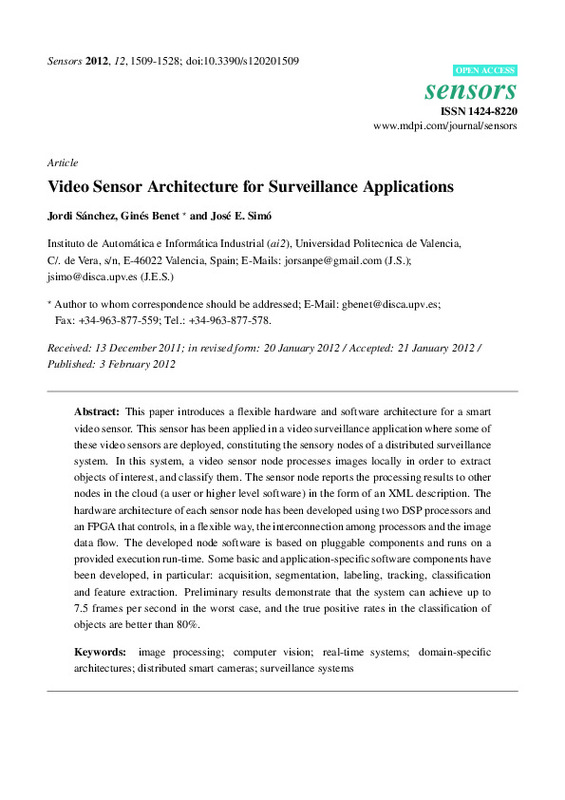JavaScript is disabled for your browser. Some features of this site may not work without it.
Buscar en RiuNet
Listar
Mi cuenta
Estadísticas
Ayuda RiuNet
Admin. UPV
Examining the effect of road horizontal alignment on the speed of semi-automated vehicles
Mostrar el registro sencillo del ítem
Ficheros en el ítem
| dc.contributor.author | García García, Alfredo
|
es_ES |
| dc.contributor.author | Camacho-Torregrosa, Francisco Javier
|
es_ES |
| dc.contributor.author | Padovani Baez, Pedro
|
es_ES |
| dc.date.accessioned | 2021-02-05T04:31:33Z | |
| dc.date.available | 2021-02-05T04:31:33Z | |
| dc.date.issued | 2020-10 | es_ES |
| dc.identifier.issn | 0001-4575 | es_ES |
| dc.identifier.uri | http://hdl.handle.net/10251/160766 | |
| dc.description.abstract | [EN] The novel semi-autonomous vehicles are becoming a reality in our roads, being a very important technological advance with promising operational and safety improvements. However, road infrastructure must be ready to host them. The technologies of these driving automation systems require certain road conditions that are not always fulfilled, causing the systems to fail. These failures generally transfer negotiation control to drivers, which may induce a crash if they were not aware of road and traffic conditions. This research analyses how ready the road horizontal alignment is for existing semi-autonomous systems. A Level 2 vehicle has been tested on many different horizontal curves, finding a strong relationship between the maximum speed that the autonomous system can attain and the curve geometry. This maximum speed is proposed as a new concept (automated speed) and has been found to be lower than the design, operating and posted speeds in many cases. Another new concept - automated driving consistency - arises, as the difference between automated and operating speeds. The related inconsistencies can be addressed with the new concept of Level of Service for Automated Driving (LOSAD), which summarizes how ready a corridor is for a certain driving automation system. This parameter should be determined - further certified - for any homogeneous road segment, and later informed to drivers. | es_ES |
| dc.language | Inglés | es_ES |
| dc.publisher | Elsevier | es_ES |
| dc.relation.ispartof | Accident Analysis & Prevention | es_ES |
| dc.rights | Reconocimiento - No comercial - Sin obra derivada (by-nc-nd) | es_ES |
| dc.subject | Automated vehicle | es_ES |
| dc.subject | Driving automation system | es_ES |
| dc.subject | Road safety | es_ES |
| dc.subject | Automated speed | es_ES |
| dc.subject | Automated driving consistency | es_ES |
| dc.subject | Level of service for automated driving | es_ES |
| dc.subject.classification | INGENIERIA E INFRAESTRUCTURA DE LOS TRANSPORTES | es_ES |
| dc.title | Examining the effect of road horizontal alignment on the speed of semi-automated vehicles | es_ES |
| dc.type | Artículo | es_ES |
| dc.identifier.doi | 10.1016/j.aap.2020.105732 | es_ES |
| dc.rights.accessRights | Abierto | es_ES |
| dc.contributor.affiliation | Universitat Politècnica de València. Departamento de Ingeniería e Infraestructura de los Transportes - Departament d'Enginyeria i Infraestructura dels Transports | es_ES |
| dc.description.bibliographicCitation | García García, A.; Camacho-Torregrosa, FJ.; Padovani Baez, P. (2020). Examining the effect of road horizontal alignment on the speed of semi-automated vehicles. Accident Analysis & Prevention. 146:1-10. https://doi.org/10.1016/j.aap.2020.105732 | es_ES |
| dc.description.accrualMethod | S | es_ES |
| dc.relation.publisherversion | https://doi.org/10.1016/j.aap.2020.105732 | es_ES |
| dc.description.upvformatpinicio | 1 | es_ES |
| dc.description.upvformatpfin | 10 | es_ES |
| dc.type.version | info:eu-repo/semantics/publishedVersion | es_ES |
| dc.description.volume | 146 | es_ES |
| dc.identifier.pmid | 32853991 | es_ES |
| dc.relation.pasarela | S\417446 | es_ES |
| dc.description.references | Zuriaga, A. M. P., García, A. G., Torregrosa, F. J. C., & D’Attoma, P. (2010). Modeling Operating Speed and Deceleration on Two-Lane Rural Roads with Global Positioning System Data. Transportation Research Record: Journal of the Transportation Research Board, 2171(1), 11-20. doi:10.3141/2171-02 | es_ES |
| dc.description.references | Camacho-Torregrosa, F. J., Pérez-Zuriaga, A. M., Campoy-Ungría, J. M., García, A., & Tarko, A. P. (2015). Use of Heading Direction for Recreating the Horizontal Alignment of an Existing Road. Computer-Aided Civil and Infrastructure Engineering, 30(4), 282-299. doi:10.1111/mice.12094 | es_ES |
| dc.description.references | Dogan, E., Rahal, M.-C., Deborne, R., Delhomme, P., Kemeny, A., & Perrin, J. (2017). Transition of control in a partially automated vehicle: Effects of anticipation and non-driving-related task involvement. Transportation Research Part F: Traffic Psychology and Behaviour, 46, 205-215. doi:10.1016/j.trf.2017.01.012 | es_ES |
| dc.description.references | Pérez‐Zuriaga, A. M., Camacho‐Torregrosa, F. J., Campoy‐Ungría, J. M., & García, A. (2013). Application of global positioning system and questionnaires data for the study of driver behaviour on two‐lane rural roads. IET Intelligent Transport Systems, 7(2), 182-189. doi:10.1049/iet-its.2012.0151 | es_ES |
| dc.description.references | Shen, S., & Neyens, D. M. (2017). Assessing drivers’ response during automated driver support system failures with non-driving tasks. Journal of Safety Research, 61, 149-155. doi:10.1016/j.jsr.2017.02.009 | es_ES |







![[Cerrado]](/themes/UPV/images/candado.png)


